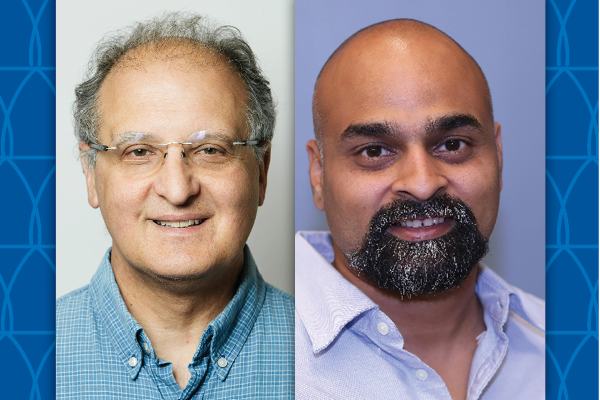
Doug Marchuk, PhD, James B. Duke Distinguished Professor of Molecular Genetics and Microbiology, and Aravind Asokan, PhD, professor in surgery, have been awarded a three-year $1.9 million grant from the Department of Defense to develop less invasive treatment options for familial cerebral cavernous malformations (CCM).
Familial CCM is a rare disease affecting less than 100,000 people in the United States. CCMs are mulberry-like lesions that fill with blood and form in the brain. The lesions can vary in size, and while some people may never know they have them, more than half of the people with CCMs will experience strokes, seizures, paralysis, or other complications.
“We’ve been studying CCM for twenty-nine years,” Marchuk said, “and for years, we’ve been testing repurposed drugs, which have shown some to no efficacy in our mouse models.”
This means that patients do not have many treatment options for this disease. In fact, there are currently no FDA approved pharmacologic therapies for CCM disease. Patients with CCM have to wait until a significant clinical event, like stroke, has happened before they can have the malformations surgically removed.
“The disease causes malformations in the brain,” Marchuk said, “but the protein complex seems to be a scaffolding complex for several dysregulated downstream pathways.” One option could be to attack each of these pathways one at a time, but that would potentially require the patient to have to take multiple drugs to reach each pathway.
Marchuk and Asokan have a different plan: using adeno-associated viruses (AAV) designed by Asokan to develop a less invasive therapy for CCM through gene therapy.
“We are working towards developing an efficient and safe gene therapy modality to potentially treat familial CCM,” Asokan said. “We will focus on engineering recombinant viral vectors to achieve selective expression of therapeutic genes in the brain vasculature.”
Using animal models, they will see if they can stop the growth of the malformations by giving gene therapy very early in the development of lesion progression. They also plan to see if they can regress or inhibit further growth after lesions have grown.
“If successful,” Asokan said, “our preclinical approach could have broader implications for treating brain vascular disorders in general.”